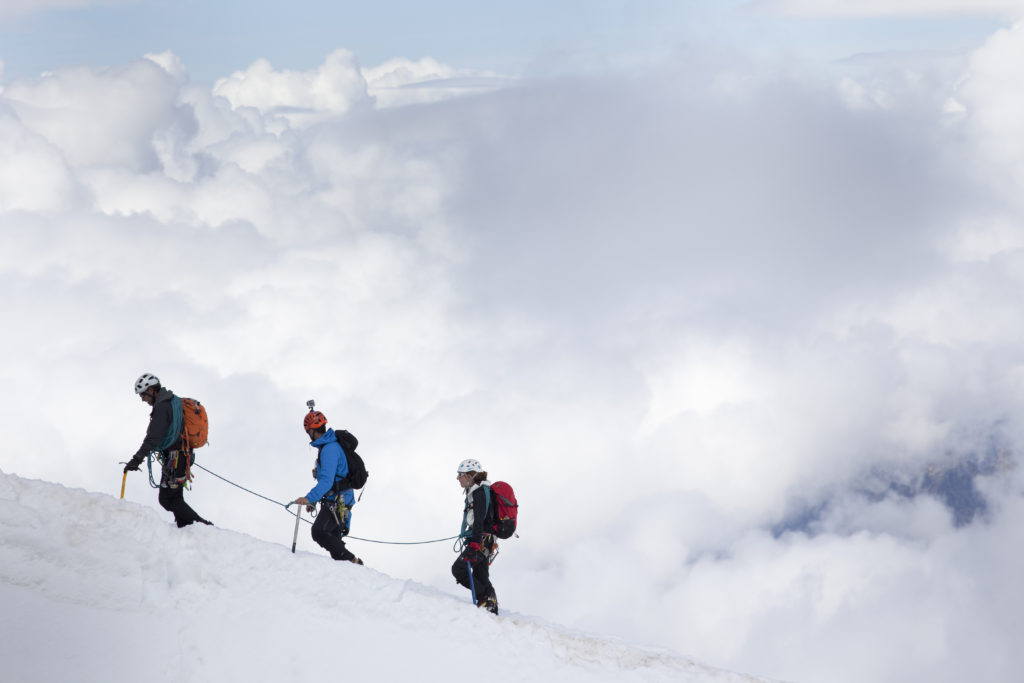How to Size An Ice Axe
Learning how to size an ice axe is crucial to technical mountaineering. If you dig around the Internet looking for ice axe advice an you’ll probably find something like:
“When holding the axe by your side the spike should touch your ankle.”
Basically, if you’re taller – your ice axe should be longer, right?
Well, not quite.
What used to be common advice is now outdated. For example, one of our guides is 6’1″ (185cm) and their longest ice axe is 60 cm. His most frequently used ice axe is 56cm, and he even uses a 45cm ice axe for ski objectives. According to the old advice, all of his ice axes are at least 10cm too short!

Why keep an ice axe short?
- On steep terrain, a longer ice axe puts the climber’s hand up by their shoulder. This isn’t a strong position to arrest from, is tiring, and can leave you off balance in terrain where balance = safety.
- Longer axes tempt you to use them as a “3rd leg” like a trekking pole. This may seem advantageous until you encounter snow conditions with a hard crust, but soft snow underneath. In those conditions you can place your axe fine, but as soon as it’s weighted for balance the spike will punch through the snow crust and slide in suddenly. Again, not ideal – it’s much better to be in balance over your feet, holding your axe above the snow in a proper position.
- The right size axe is the one you’re used to. When using your axe as a self arrest tool the most important factor is your familiarity, you should be able to react into arrest position without thinking. So whatever axe length you train with is the right one for you!
Two great ice axes on the market right now are the Petzl Sum’tec and Black Diamond Venom, with an adze rather than a hammer for general mountaineering. Both are designed to work well in low angle glacial terrain, but also perform on steep snow and ice up to about 75 degrees – much more versatile than a standard ice axe.
Whatever axe you choose, make sure to practice your arrest!

Need to practice your mountaineering skills? Check out our expedition at the Australian Alpine Academy.